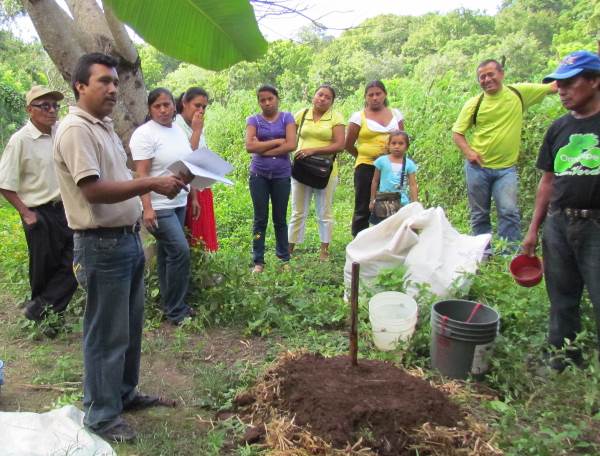Fauna & Flora International Climate Adaptation Planning Project

Introduction
Fauna & Flora International (FFI)’s Climate Adaptation Planning Project is conducting climate adaptation planning processes at six biodiversity project sites within agricultural landscapes, assessing the vulnerabilities of biodiversity, people and the wider landscape to climate change and identifying actions that will build their resilience to the predicted changes.
The project, which is supported by the British American Tobacco Biodiversity Partnership and runs from 2010-2015, is being conducted at the following six sites, selected from FFI’s global project portfolio:
- Ometepe island, Nicaragua
- Childukhtaron Reserve, Fruit and Nut forest, Tajikistan
- Kyzyl Unkur, Fruit and Nut forest, Kyrgyzstan
- Bangliang Gibbon Nature Reserve, Guangxi Province, China
- Palawan island, Philippines
- Lake Piso, Liberia
Methods and Tools
The project has taken a “bottom-up” approach to climate adaptation planning, drawing on the knowledge of project teams, partners and local communities who live and work at sites day-to-day. A participatory process for adaptation planning has been developed, with consideration of the vulnerabilities of biodiversity a key feature. At the start of the project, FFI identified a paucity of adaptation planning tools that incorporate biodiversity and the process developed by the project helps to fill that gap.
At each site, a diverse range of stakeholders including government and relevant local institutions have been involved, and outputs and lessons learnt are being actively shared with relevant national stakeholders.
The climate adaptation planning process developed through the project comprises a series of guided group discussions and participatory analysis with stakeholders and local communities, with targeted research to fill knowledge gaps as required. The information collected is used to develop a Climate Adaptation Plan for the site, identifying the short- and longer-term actions needed to increase resilience and adaptive capacity.
The process is summarised in a toolkit, which includes a series of workshop outlines and supporting hand-outs to guide discussion. Although designed for use at conservation project sites, the approach could readily be adapted for use in other contexts. Case studies from each of the sites are being written up and shared publicly, so that the experiences from this approach can inform climate adaptation planning policy and practice elsewhere.
Access our Climate Change Adaptation Planning Toolkit here
Completed Case Studies
Case studies of the site climate adaptation planning have been produced as part of the Fauna & Flora International Climate Adaptation Planning Project (these case studies can be downloaded from the Further Resources section at the bottom of this page).
(0) Comments
There is no content